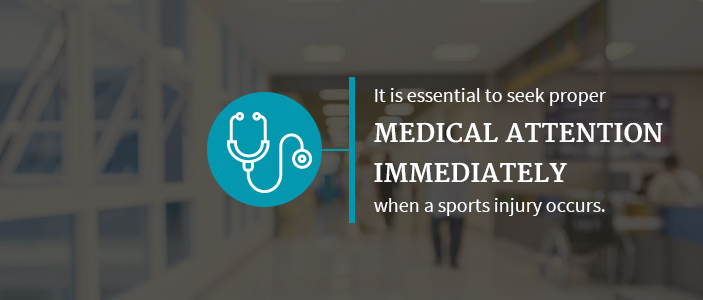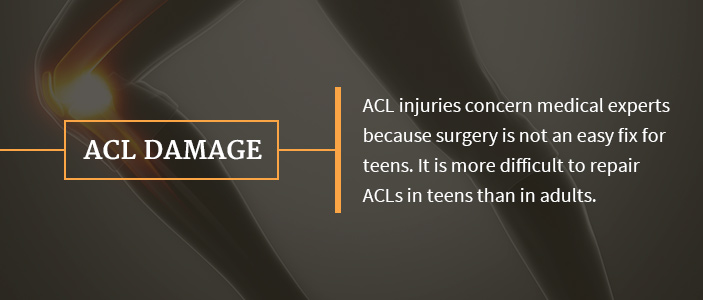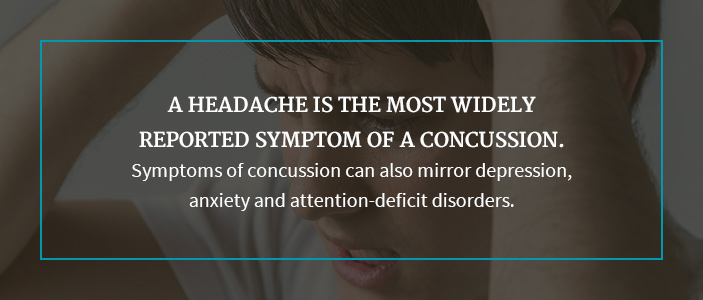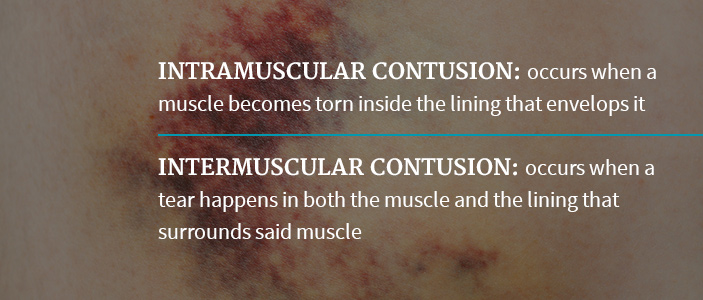Some 30 million kids play some type of organized sports in the United States. More than 10 percent of them, some 3.5 million, will experience an injury at one point or another.
There are many benefits for teens who participate in sports. These benefits are immediate and extend far into the future. Playing sports on a team or individually not only provides excellent exercise opportunities but also helps to prevent obesity and chronic health problems. Sports also teaches the concepts of teamwork, discipline, strategic thinking, and improved self-confidence.
Luckily, there are ways these injuries can be prevented. Read on to learn why injuries can impact an athlete beyond the physical consequences and what steps parents in Central PA can take to keep their teen athletes’ injuries to a minimum.
Negative Effects of Injuries

When a young athlete becomes injured, it can cause significant levels of stress and setbacks for the teenager and their support system. It may affect their family, coaches and teammates. The pressure felt by the high school athlete to perform could even prolong the impact of the injury in unexpected ways, such as:
- Time “Lost” Due to Injury: The athlete not only has to deal with the injury but could lose time at school, at practice and with their friends. It’s possible they might miss a whole season.
- Shattered Expectations: Family, coaches, and the school’s community can project a lot of their expectations upon a team’s young players. An injury will immediately put a negative tinge on these hopes and aspirations.
- Lost Scholarship Opportunities: Student-athletes seeking out athletic scholarships may have their future plans fall apart when they are injured. With everything up in the air, added stress becomes part of the healing process, which isn’t good for a teenager, especially one who is trying to heal.
Athletes can obtain additional injuries that take years to fully heal because they continue to play without letting the original injury heal properly. These injuries may lead to problems during adulthood, requiring one or more future surgeries. In many cases, arthritis becomes a problem later down the road when there isn’t proper medical treatment or healing for an extended period of time.
It is essential to seek proper medical attention immediately when a sports injury occurs. To make certain the best possible healing and recovery happens, athletes, their parents and their coaches need to follow best practices, so they can get back to playing again sooner rather than later. Your athlete should strive for high school athletic injury prevention.
The Most Common Classifications of Injuries Among High School Athletes
The most common injuries for high school athletes vary. Different types of injuries depend on several factors, including the parts of the body affected and the different sports they play. Awareness of possible injuries can help us learn how to better prevent or lessen injuries in high school athletes. The most frequent types include:
- Acute injuries
- Overuse injuries
- Catastrophic sports injuries
- Concussions
- Growth plate injuries
Let’s take a look at seven of the most prevalent injuries to high school athletes and how to prevent them.
Injury 1: ACL Damage

One type of knee injury is when damage occurs to the ACL, or the anterior cruciate ligament. Considered a severe injury, this happens mostly to football players and those who participate in other contact sports. Doctors are seeing more and more adolescents and teens with ACL injuries than they saw just two decades ago.
They note young people start sports much earlier in life while pushing themselves harder than they used to so they can stay competitive. Another cause for the rise in ACL injuries in younger athletes is they focus on just one sport, which puts their knees at high risk for injury with repeated motions.
ACL injuries concern medical experts because surgery is not an easy fix for teens. It is more difficult to repair ACLs in teens than in adults. ACL reconstructive surgery in younger people can cause unevenness in the lengths of their legs or other complications. Yet opting to skip surgical repair can result in other problems such as early arthritis symptoms.
How to Prevent ACL Damage
Strengthening the knee, hips and thighs offers one way to guard against an ACL tear. Have your teen do squats, lunges and core moves to improve strength in these areas.
Proper warm-ups before athletic activity can limber up the ACL before activity. Emphasize to your teen the importance of jogging and stretching prior to games and practices.
Finally, encourage kids to keep an awareness of their knees while playing. Watch for the knee collapsing in. Have them practice keeping the knee lined up above the foot when they jump, run or stop suddenly.
Injury 2: Runner’s Knee
Runner’s knee is a blanket term used for describing conditions that affect the knee. It occurs most among runners because of overuse. They happen in athletes who do a lot of activity that requires bending of the knee, like bicycling, skiing or jumping. Runner’s knee stems from a misaligned kneecap. When it rests off track, it causes pain because it does not slide smoothly.
Signs of runner’s knee include pain and tenderness behind the kneecap or on either side of the kneecap toward the backside and middle of the knee. Also, there may be swelling of the knee. Pain will generally present when bending the knee while walking, kneeling or running. Sitting with your knees bent for a long time can spark pain as well. If left untreated, this condition can damage knee cartilage and lead to arthritis in the knee.
How to Prevent Runner’s Knee
Teens can employ a number of different tactics to guard against runner’s knee, including:
- Strengthening the knee with exercises similar to those used to prevent an ACL tear
- Changing their running gait, which could reduce stress on the knee
- Not building up running mileage too quickly
- Taking a break from exercise when knee pain flairs
Injury 3: Concussions

These are injuries to the brain of a traumatic or mild nature, depending on the severity. Concussions happen when someone takes a hit to the head or body. The blow causes forceful movement of the brain in the skull.
Signs and symptoms of concussions are divided into four different categories:
- Physical
- Cognitive
- Emotional
- Sleep-related
A headache is the most widely reported symptom of a concussion. Another symptom of a concussion is amnesia. Symptoms of concussion can also mirror depression, anxiety and attention-deficit disorders. If a teen already has any of these disorders, a concussion can make the symptoms worse and harder to control. Teens with learning impairment issues and other cognitive delays may also show the same symptoms. This also makes treatment and management of a concussion more difficult.
Concussions can occur in all sports, but they happen most frequently in girls’ soccer, basketball and volleyball, as well as boys’ football.
How to Prevent Concussions
Here are a few tips on how to prevent concussive injuries in high school athletes:
- Choose the Right Protective Gear: Make sure your teen wears the appropriate headgear for their sport. The headgear should fit properly. Don’t forget about safety equipment when participating in non-contact sports, such as biking, skateboarding, rollerblading, snowboarding or skiing. Helmets and other headgear prevent damage from concussions. Helmets and mouth guards can reduce the risk of injury to the brain.
- Stay Aware: Helmets and head protection are the first line of defense against concussions. That said, concussions can still occur because protective headgear doesn’t stop injuries. If you hit your head, your brain can still move about and get injured by skull impact, even with a helmet on. Teach your teen to make smart choices on the field that put them in less danger of sustaining a hard blow.
- Don’t Take Chances: Tell kids to avoid dangerous play. This includes recklessness or goofing off. There are rules in sports for a reason. Learning correct technical form and building skills will make concussions and all types of injuries less likely to occur.
Injury 4: Little League Shoulder
For baseball or softball players, constant strain and stress on the shoulder from the excessive throwing of a ball causes microscopic damage to the growth plate, which results in pain and swelling. Gymnasts incur similar damage in their wrists and body as well. Repetitive training is a significant contributing factor. Little League shoulder is considered a growth plate injury.
How to Prevent Little League Shoulder
Don’t play one sport all throughout the year. Teens need at least three months away from a sport to allow microscopic damage, a.k.a. microdamage, to growth plates to heal. Changing up physical activity routines for a couple of months every year will work out other muscle groups.
Injury 5: Ankle Sprains
Sprained ankles are so common we all know at least one person who has suffered a sprain in their lifetime. Teenage athletes commonly deal with these. Ankle sprains occur when supporting ligaments of the ankle become torn or stretched past the point they’re supposed to stretch. You can get one from running on a field and inadvertently step on a pebble or in a hole. Ankle sprains fall into the category of acute injuries.
There are three types of ankle sprains. They are classified by severity of the injury:
- Grade One: This is the least severe level of injury. Ligaments stretch just slightly. The pain felt in a Grade One sprain presents with a little soreness and perhaps a small amount of swelling.
- Grade Two: The ligaments tear, but just a small part of them. This painful sprain will remain swollen. You will be hard-pressed to put weight on your foot with a Grade Two ankle sprain.
- Grade Three: The most severe sprain, Grade Three means the ligament is completely torn. This type of sprain is incredibly painful and produces formidable swelling. Attempting to put weight on this sprain will be nearly impossible because of the severity of the injury.
How to Prevent Ankle Sprains

Instruct your teen to never skip a chance to warm up and stretch. Tell them to always do this before working out or participating in competitive sports or miscellaneous physical activity.
Teach teens to look where they walk. It sounds simple enough, but it really helps to be aware of upcoming steps. Advise them to look for surfaces that aren’t level and for cracks in the sidewalk or asphalt. They should also look out for twigs and rocks. Stepping on one of these unaware can cause ankle sprains.
Make sure teens get plenty of rest off the field. Fatigue leads to sloppiness, which ups the chances of getting injured. If they are tired, remind them to add extra vigilance and look at their surrounding walking and running surfaces. If your teen has weak ankles that sprain easily, utilize braces, tape or supportive shoes for added protection.
Injury 6: Jumper’s Knee
Jumper’s knee is when the kneecap tendon becomes injured or inflamed. The kneecap’s tendon, also known in medical terms as the “patellar tendon,” connects the kneecap to the bone in the shin. This injury is an example of overuse. Overuse refers to movements that repeat over and over, causing damage to tissue in specific parts of the body.
Basketball is a frequent culprit in jumper’s knee. In basketball, the athlete lands from jumps, switching directions suddenly, and shuffling up and down the court with countless stops and starts. All these movements contribute to jumper’s knee. They place a strain on the patellar tendon. Teens who routinely participate in volleyball, gymnastics and running place a lot of stress on their knees. Jumper’s knee is considered an overuse injury.
Common symptoms of jumper’s knee include:
- Pain that occurs below the kneecap
- Knee stiffness, especially during jumps, kneeling, walking up the stairs and squatting
- Pain when bending the knee
- Pain in the thigh muscle, or quadriceps
- Weakness in the calves or legs
How to Prevent Jumper’s Knee
Stretching is the most essential preventative for jumper’s knee. Prepare a routine for your teen to warm up and stretch out their quads, calf muscles, and hamstring muscles to head off potential injury. Set aside some extra time for your teen to stretch their legs after exerting themselves as well.
Injury 7: Quadriceps Contusions

The muscles on your leg located in the front of your thighs are called quadriceps. Quadriceps assist in flexing your hip. They also help to straighten your knees every time you run or walk. Quadriceps connect to the thighbone or femur. A straight-on hit to your thigh can give the muscle a violent shove right into the bone. When this happens, the injury can be pretty painful and severe. Quadriceps contusions are categorized as acute injuries.
You can get two types of quadriceps contusions. An intramuscular contusion occurs when a muscle becomes torn inside the lining that envelops it. An intermuscular contusion occurs when a tear happens in both the muscle and the lining that surrounds said muscle.
Teens who play sports like hockey, lacrosse, football and soccer are at an elevated risk of getting quadriceps contusions due to the constant collisions that occur in these sports. Quadriceps contusions are separated into three categories:
- Grade One: These are the least painful of the three categories. There’s a little bruising, a little pain and minor tenderness. If there is any swelling, it will be minimal. Walking isn’t hindered, nor is bending of the knee.
- Grade Two: These contusions present with more pervasive bruising. There is visible swelling and most likely quite a bit of trouble moving around. If you move, you’ll probably walk with a limp. The bruised area will be tender. Knee bending will be difficult.
- Grade Three: Contusions at Grade Three will be deep. A lot of swelling and pain will let you know you’re at Grade Three. Bending the knee will be very difficult, as will walking on your own. Knee bends will be very hard, as will attempts at straightening your injured leg.
How to Prevent Quadriceps Contusions
Invest in protective equipment that fits your teen well. When playing high-risk contact sports, make sure your child wears the required padded pants.
Remember the rules. Play by the rules of any sport, and there is a lesser chance of injury.
Tell teens to keep their physical limits in mind and exert themselves within their abilities. Knowing their limitations will decrease risks of injury. This mostly applies to recreational sports like snowboarding, skiing and skateboarding.
General Tips for Preventing Common Injuries in High School Athletes
Here are a few more injury avoidance tips for young athletes who play all kinds of sports:
- Get Adequate Sleep: Teens who don’t get enough sleep are more likely to be injured while playing sports. Teens who get at least eight hours of sleep every night have a 68% lower risk of sports injury compared to those who sleep less on a regular basis.
- Take a Day Off: Taking at least one day off from sports per week is beneficial. A young athlete’s body needs this time to recover.
- Take Breaks During Practice: Taking breaks during practice and games reduces the risk of getting injured. It will also help in fending off heat-related illnesses on the field during the warmer months.
- Stay Hydrated: Drink plenty of fluids before, during and after games and practices.
- Increase and Maintain Flexibility: Before exercise, practice or games, do some stretching. A little stretching goes a long way in preventing injuries.
Watching your young athlete play can be exhilarating and joyous. If an injury does happen, it is scary to see your child get hurt on the field. For compassionate, experienced orthopedic care and advice on how to help your high school athlete deal with an injury, contact Orthopedic Institute of Pennsylvania. We have treated kids in Central PA for injuries for years, and we can help you and your family through this difficult time.
Last Updated on 06/29/2020 by OIP


